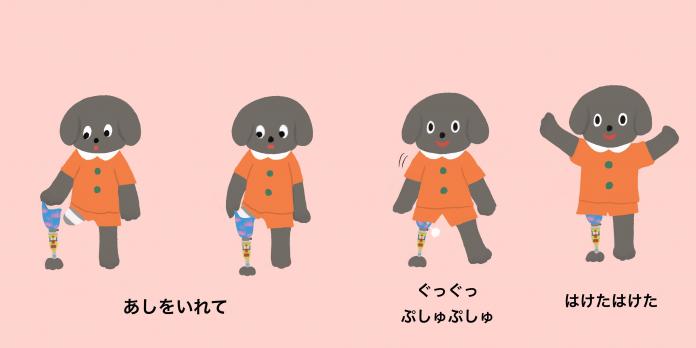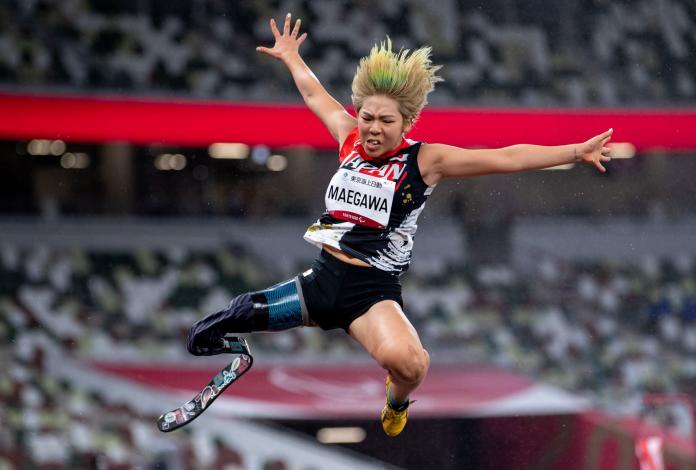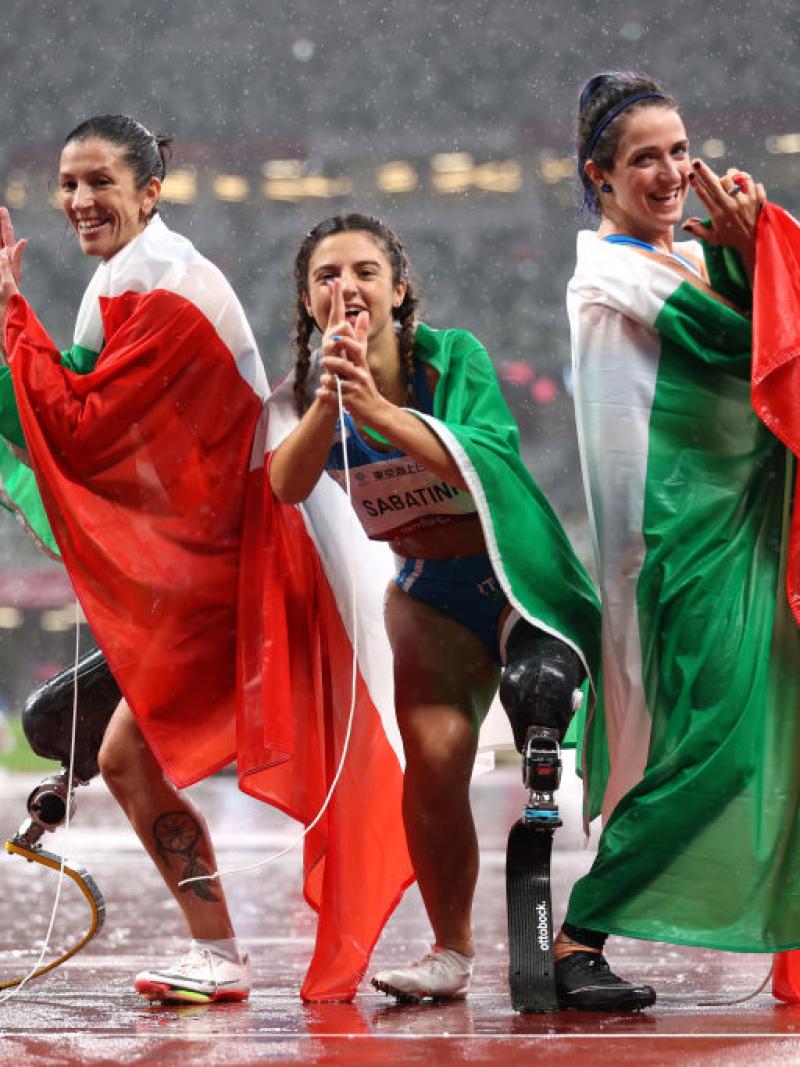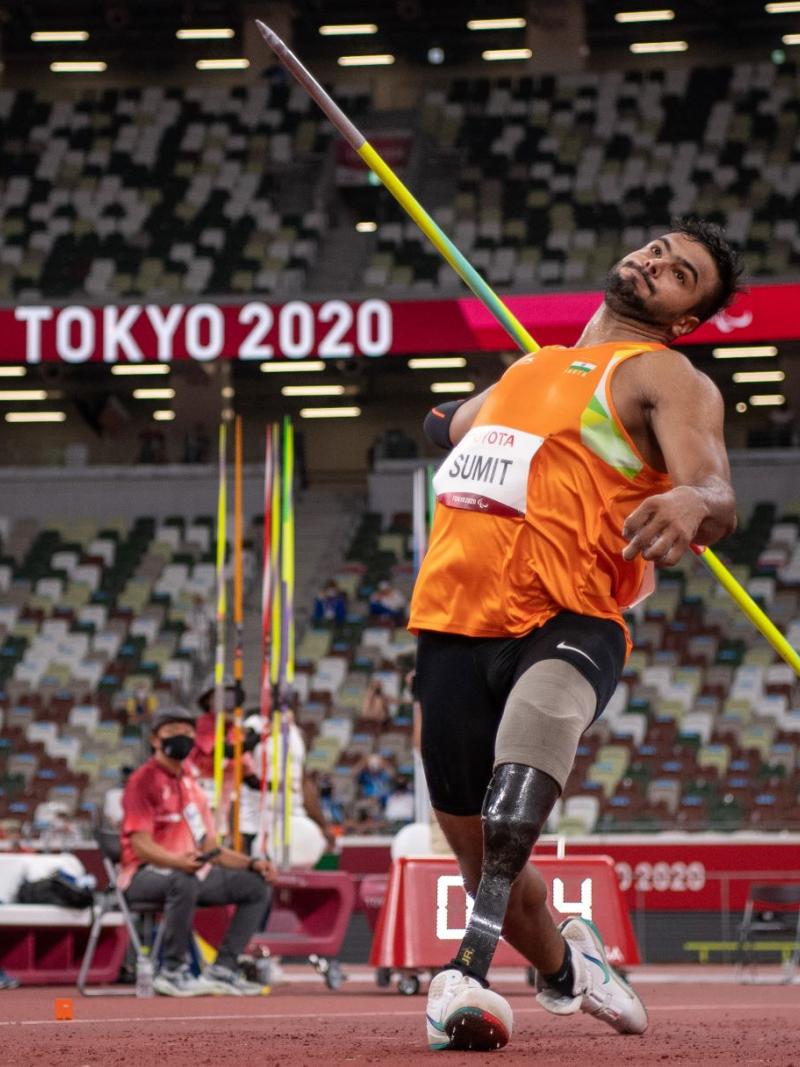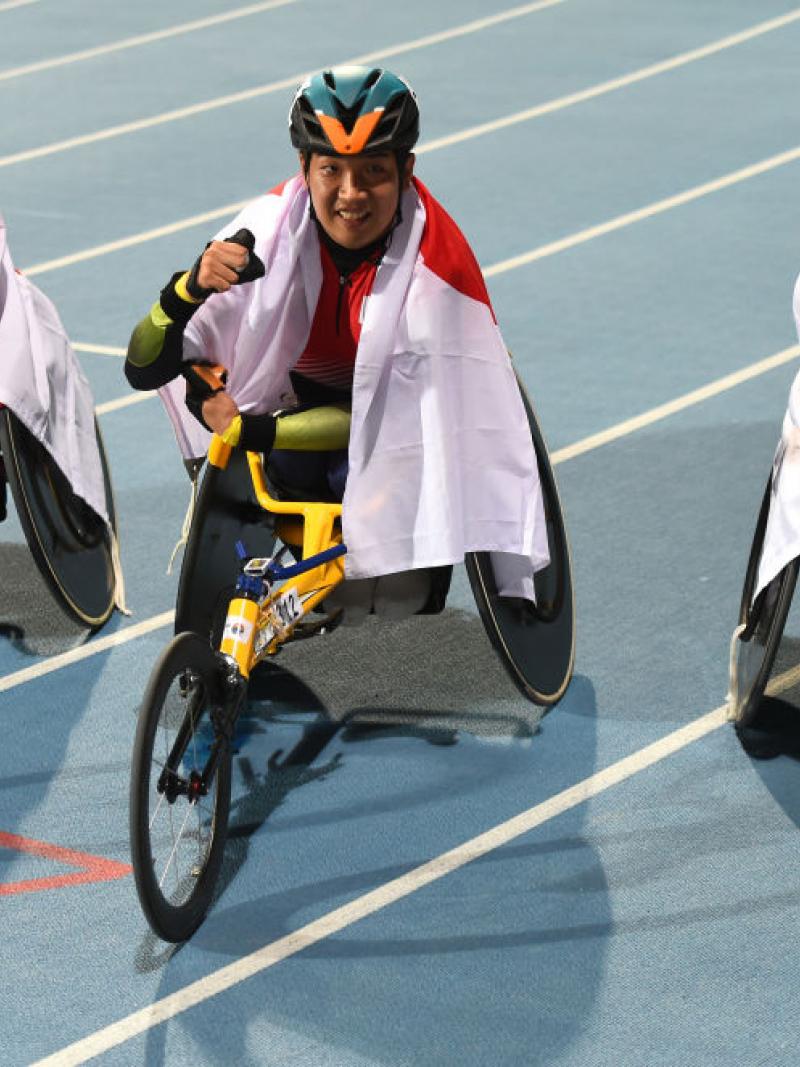Japanese Paralympian Maegawa writes children’s book about prosthetics
Kaede Maegawa, who competed at the Rio 2016 and Tokyo 2020 Paralympic Games, wrote a book last year about a black dog with a prosthetic leg 09 Nov 2022
If you flip through a yellow children’s book written and illustrated by Japanese Paralympian Kaede Maegawa, you will see the morning routine of a cute black dog with a prosthetic leg.
The dog wakes up, hops to the bathroom, and puts on a prosthetic leg before changing clothes and having breakfast, similar to how 24-year-old Maegawa starts an ordinary day.
Maegawa, who competed in the women’s long jump and 100m T63 at Rio 2016 and Tokyo 2020 Games, drew pictures and came up with the words of the book during training camps ahead of last year’s Paralympics. She hopes to familiarise children with what it is like to have a prosthetic leg.
Since the book “Qoo-chan Itterasshai (Have a nice day, Qoo-chan),” was published at the end of last year in Japan, she has been surprised by the response she is getting.
The short story follows Qoo-chan, a black dog inspired by Maegawa’s Labrador Retriever that she was walking when she was in an accident in 2012.
“I wanted to share the ordinary things in life. I want readers to think about what it is like to have a prosthetic leg and how different it can be,” she said. “I also hope the book will encourage children with prosthetics to take a step forward.”
Like wearing glasses
Maegawa said she had always wanted to write a picture book. But she was inspired to write about prosthetics after seeing the son of three-time Paralympic medallist Atsushi Yamamoto in early 2021.
Yamamoto’s son, who was about three years old at the time, tried to loosen a screw on his dad’s prosthetic leg and try it on himself, copying what the athlete does every day.
“It made me realise that, for (Yamamoto’s) child, his dad wearing prosthetics is the same as other kids having fathers who wear glasses. I thought how amazing it would be if kids can familiarise themselves with prosthetics from a very young age,” Maegawa said.
And from there, it was very quick. She found a publisher and drew pictures on her tablet while she prepared for the Tokyo 2020 Games.
“It was just before the Paralympics, but I drew on my days off or in between practices,” she recalled. “I wanted to make something that can be easily understood even by kids who don’t know many words yet.”
Encouraging children
Maegawa’s book has been on the shelves of bookstores in Japan and was also distributed to local schools and kindergartens in a city in her native Mie Prefecture.
While that is an accomplishment in itself, she is especially proud of one message she received from a mother of a boy using a prosthetic leg. The boy had trouble fitting in with other children at school and he did not take part in gym class, because he did not know how to tell his teacher that he actually wanted to be in class.
“One day, the boy brought my book to school and said to other students, ‘the character is just like me.’ That gave him so much energy, and he was able to tell his teacher that he wanted to be in gym class because there are things he can do,” Maegawa said.
With her first book being a success, she is now working on sequels.
In one book, the black dog goes to the beach, because Maegawa has been asked by children how leg amputees swim. In another book, Qoo-chan will learn how to run with the help of characters inspired by Japanese Paralympians.
Maegawa's story
While the book about the little dog is inspired by her own experience, what has Maegawa's story been like?
Maegawa, who was in junior high school at the time of her accident, said it took her about a year to get her first prosthetic leg. Even though wearing a prosthetic leg causes pain at times, Maegawa said she has always liked how it looked on her.
“I really like my prosthetic leg. I like how it’s mechanical-looking. When I tried it on for the first time, I just thought how cool it looks,” she said. “At first, I didn’t like how people would stare at my leg. But since people will stare no matter what, now I try to make it seem really cool and fashionable.”
However, Maegawa said that running with a prosthetic leg is a different matter. Having played basketball, she did not like having to sit out of physical education classes at high school and made it her goal to be able to run again.
“I was watching the London Paralympics (in 2012) in my hospital room so I knew it was possible for me to run,” she recalled. “But even if you want to run, it’s very difficult to find out where to start. I was just lucky that I had a very supportive environment.”
She joined a local running club and she tried on other people’s blades and learned from fellow amputees. It took her about six months to be able to run and eventually made her world championship debut in 2015.
The story continues
After finishing outside of the podium at both the Rio and Tokyo Games, Maegawa is now determined to win a medal at Paris 2024.
In order to do that, she went to Italy for two months this year to train and spend time with Martina Caironi, a two-time Paralympic champion and the world record holder in the women’s 100m and the long jump in Maegawa’s T63 classification.
"I was able to train with Martina, and I also saw how she spends time outside of sports. My time in Italy had a huge impact on me - I became close with Martina, and I also learned so much about myself,” she added.
With less than two years until the next Paralympic Games, Maegawa said, “I want to give my 100 percent and spend every minute, every second without regrets."





